A tire pressure sensor, as the name implies, alerts the driver of an underinflated tire. It is a small computer that is located inside each tire of a vehicle. It is also called TPMS for short, which stands for Tire Pressure Monitoring System. It was made mandatory for all vehicles in the U.S. since 2007.
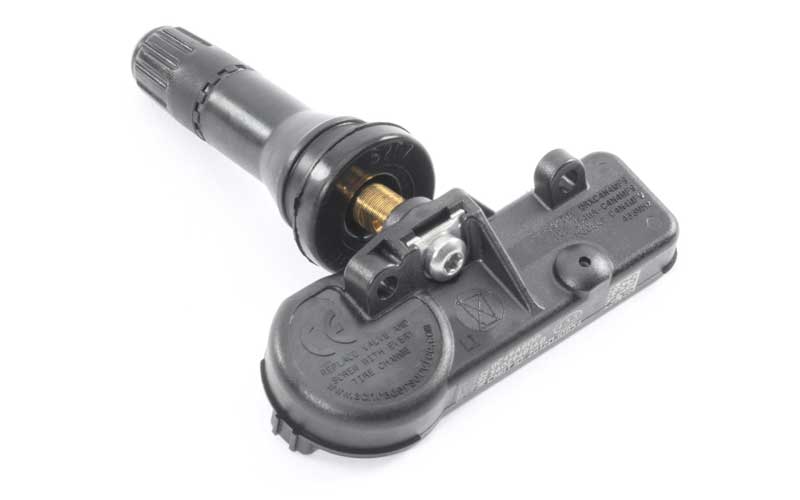
A tire pressure sensor
Tire pressure sensors are divided into two types, which are:
- Valve type
In this type, the sensor and valve stem are one unit.
- Band sensor
In this type, the sensor is attached to the inside of the rim with a metal band.
Both these sensors are necessary to have because both these sensors lighten up the dash light whenever the pressure reading than it is supposed to be, which alerts the driver to a tire with low air pressure.
What does a tire pressure sensor look like?
Whenever the tire pressure detects a problem with the tire pressure, it sends a signal to the car’s computer, which lightens a light on the dash. This light is in a bright yellowish tone, which looks similar to an exclamation mark (!) inside a “U” shaped symbol.
This is a signal to the driver that tires might be flat or just low, so whenever this signal appears, you should quickly examine your tires.
Is it safe to drive with the TPMS Light on?
Well, the question arises if it is safe to drive when tire pressure sensor gives you a constant signal. So now you cannot drive with TPMS light on; here’s why?
When the tire pressure is low, then a TPMS light activates, which can lead to premature tire wear and tire failure.
As discussed above, the TPMS alerts you when the tire pressure is too low by showing a warning light on the dashboard. Proper tire inflation is very important for tire performance, car handling, and carrying ability.
A tire has to be inflated to the right amount because it can prolong the tire life, roll easier for optimal fuel efficiency, and increase water dispersion to prevent cases of hydroplaning. Low pressure and high pressure in tires can lead to unsafe driving and cause accidents and even tire bursting.
If the pressure is not to the right amount, then it can build up extra heat. High tire pressure and overinflated tires can cause poor traction, early wear, and difficulty to absorb road impact.
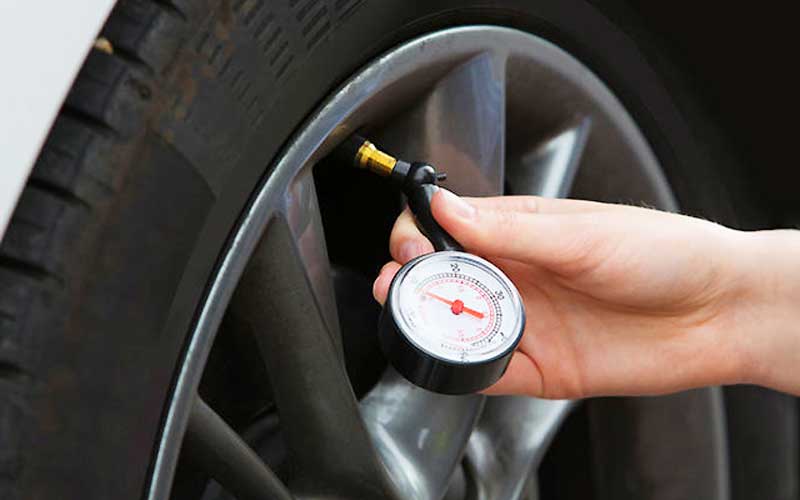
High tire pressure
If you do not treat it on time and tire fails from any of these conditions, then it could lead to a blowout that causes you to lose control of the vehicle potentially.
You can find the proper tire pressure for your car in your owner’s manual, which comes with the car, or on a sticker located on the door, trunk, or fuel door. Every car has its own tire pressure, which should be taken seriously.
Be sure to ask your owner’s manual for specific instructions and monitoring your TPMS system, as manufacturers may set their TPMS lights according to their choice to trigger differently.
Who’s going to fix it?
If the sensor breaks or have some fault, then you should urgently get it checked because it can be very dangerous to drive with unfit tires.
This is another common question that comes in your mind, who will fix the tire pressure sensor fault now? Choosing a place to have your sensor repaired is solely up to the owner of the car.
If your sensor is broken, then you should get it replaced on time, and it is always better to go to a professional repair shop that is trustworthy and reputable. Don’t go to those shady and hidden places because they can do more harm than good.
Sometimes, when it comes to tire pressure sensors, then a big name dealership is not always suitable. A local tire shop that has a good reputation and experience can solve your problem and have the capability and knowledge the replace the sensor correctly.
Symptoms of a tire pressure fault sensor
Knowing your car better is very important because you generally buy it after a lot of hard work. Before going for a checkup for your car, you should know the basic symptoms of a faulty sensor.
The sensor is an electrical component, so it can be damaged because of plenty of reasons like warranty, dirt heat, and irregular power supply.
Some of the high or low tire pressure sensor fault symptoms are as follows:
- Low pressure of air in tires
- A warning light on the dash
- Check engine light is turned on
- Wrong warnings on the DIC
How to fix a tire pressure fault?
Step 1: Your tire should have the right air pressure before you start the repair process. There’s a label behind every car that shows the right tire pressure for that particular car.
Tire information is also provided on the repair manual so that you can check from there as well. You can use air gauge to see if the tires have corrected air pressure.
Step 2: Sometimes, the car has over inflation, so to bring it to the right level, you need to let some sir out until it is on the correct level. If the tires are under-inflated, then fill up the tire with some more pressure that is mentioned in the label.
Step 3: If the pressure label says 240kpa, the tire pressure monitoring system will show an error code of the air pressure goes below this level. If you fill the tire up to 240kpa when the tires are hot, the pressure will go down to 220kpa when they are cold.
Step 4: If you want to repair the TPMS system in your car, then some models have a reset button. You can push if after filling up the tires with the correct level. You also need to drive the car for at least 15 minutes for the warning lights to go off.
How to reset tire pressure sensor
The tire pressure monitoring system plays an important role in helping you warn about the under-inflated or over-inflated tires in your vehicles.
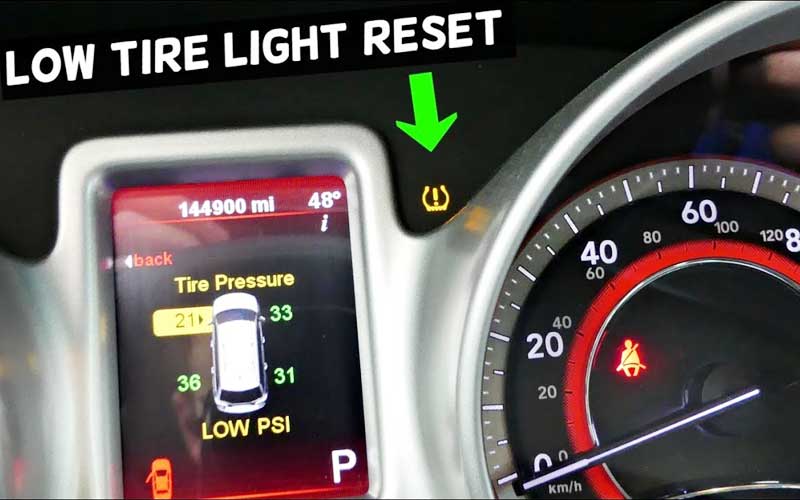
Reset tire pressure sensor
Basically, there are two kinds of tire pressure monitoring systems, Direct TPMS (dtpms) and Indirect TPMS (itpms). Well, both of them are used for the same purpose; they both check the pressure in each tire of the vehicle and warn the driver about low or high pressure, preventing serious accidents.
Hence, there is a need for resetting the sensor with time to ensure the safety of the car as well as passengers. This article will help you know how to reset the tire pressure sensor in an easy and effective way. Let’s find out now.
Direct or indirect monitoring system:
· Direct TPMS (dTPMS)
This type of TPMS is often used in the U.S. The sensors are usually located inside the tire pressure valve or wrapped around the rim of the wheel with a band clamp that acts as an antenna.
These devices are used to measure the tire pressure in every tire and transmit the information to the instrument cluster or an onboard computer. However, these devices can throw off the balance of a tire and can corrode in severe conditions.
· Indirect TPMS (iTPMS)
The indirect tire pressure monitoring system is standard for European countries. It is located exactly within the speed sensors and ABS braking systems of each wheel.
Indirect tire pressure monitoring system does not use physical pressure sensors, but they monitor several wheel rotation speeds and other signs outside of the vehicle’s tires to measure the air pressures for any change since under-inflated tires are smaller and rotate faster.
They cannot display or even measure pressure values precisely; they are relative by nature and needs to reset while checking tires and adjusting all pressure correctly.
Though they don’t affect tire balance nor even corrode them, they must be reset with a scanning tool whenever tires are replaced or even rotated. Their reset can be done by a menu of the onboard computer or a physical button.
Resetting tire pressure sensor
To reset the tire pressure monitoring system to have it function properly, you need to follow the guideline. Here are a couple of ways that you can adopt to reset your sensor step by step.
1. Determine the type of TPMS system
The first and foremost step to perform is to see whether your vehicle has a direct TPMS or indirect TPMS. If your car uses a direct system, resetting the tire pressure sensors may be as simple as pushing the reset button on the dash or maybe following the menu, as told in your owner’s manual.
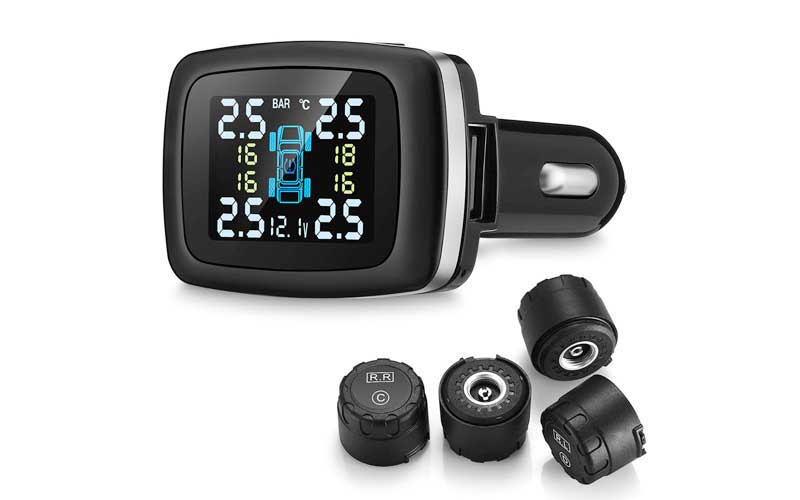
TPMS system
On the other hand, if your car uses an indirect system, the system could be reset by using a magnet or a scanning tool by either a dealer or one you personally bought. Some of the systems have a reset button inside the glove box that needs to be pressed and held down for three seconds with the ignition on.
If you are not aware of the tire pressure monitoring system your car has, you can read that on the car maintenance tips by auto experts to identify it.
2. Inflate the tires
Nest step of “how to reset TPMS” is to make sure all the tires of your car are properly inflated. Keep in mind that you are setting the sensors back to “zero,” so all the tires should have to be properly inflated. If not, the sensors will not be calibrated properly, and their readings won’t be accurate.
3. Check the battery
See if your car makes use of the battery to power up the sensor, if yes, then make sure that it is not out of order. It is always a good idea to change the battery of your car every five years. At times, you may have to replace the whole sensor system unit since the battery is in-built to ensure the safety of your vehicle.
4. Recalibrate the transponders
Each wheel possesses its own transponder. Whenever you rotate the wheels, for every rotation, the wheels change the location of each responder, and the TPMS must learn their new locations.
This method of relearning procedure is different from different vehicles but may be found in the TPMS chart in your manual or even online. So it’s a nice idea to amend the valve stems in the care you are getting new tires if the valve stems are also the tire pressure sensors.
5. Use the magnet method
There are two buttons on the key fob, unlock and lock. To make your TPMS reset, you have to push both the buttons –lock and unlock with the key on and engine off. Now you have to put a magnet over every valve stem unless the horn chirp for each one in the order: which is,
Left front, right front, right rear, and left rear!
Verify that the pressure readings are displayed on the driver information center.
6. Use the scan method
Sometimes, the sensors are not being replaced in your car, and then you can follow the menu prompts for the TPMS reprogramming procedure that is listed in the owner’s manual. Your TPMS system will reset if you don’t choose to replace it.
Final Thoughts
According to the NHTSA National Highway Traffic Safety Administration, it regulates that every vehicle that appeared in the market aster 2008 must have a proper tire pressure monitoring system.
The NHTSA regulated this instruction to avoid maximum fatal accidents due to under-inflated or over-inflated tires. Thus it is now very important to know how to reset the tire pressure sensor for all the drivers.
Hopefully, this article will help you know more about your car and how to solve the problem if your tire pressure sensor is at fault and needs to be replaced and reset. Thank you for reading it!


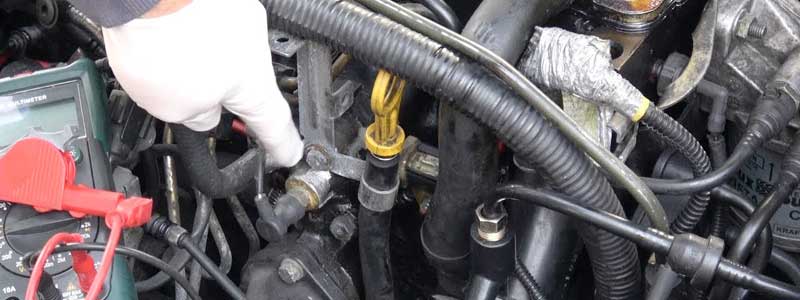

That is great post to read it. Thank you for sharing